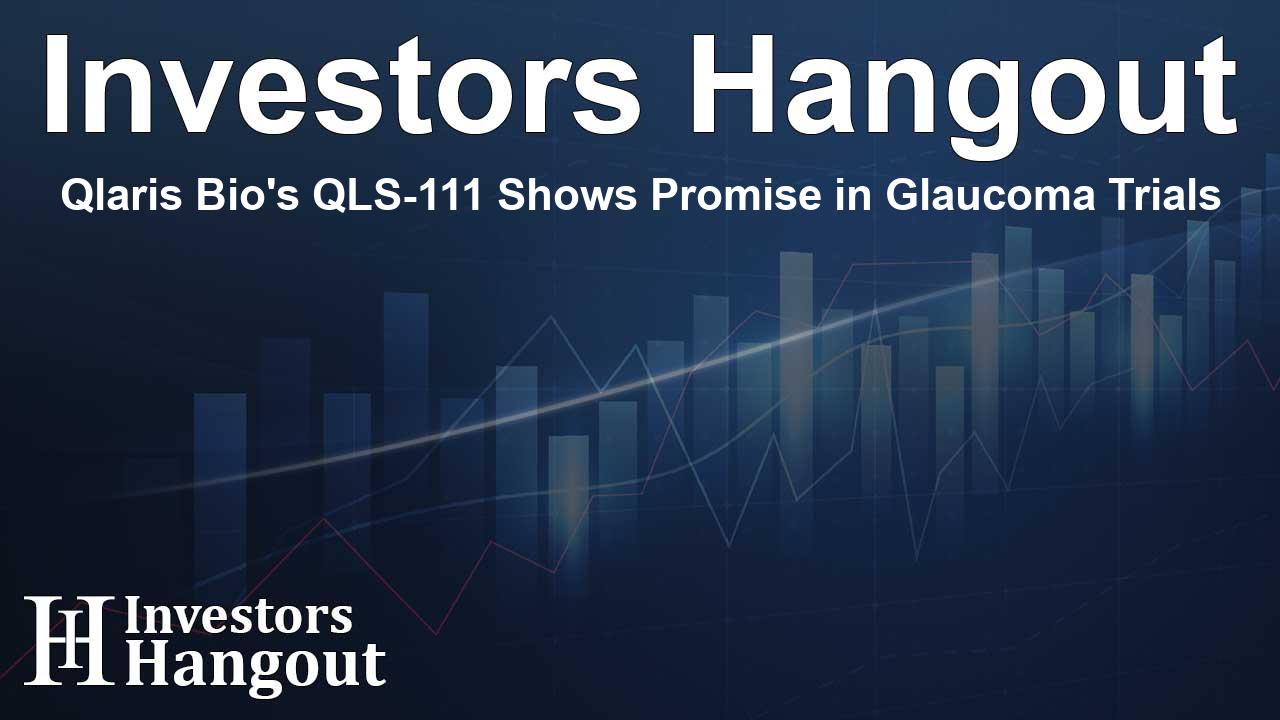Qlaris Bio's QLS-111 Shows Promise in Glaucoma Trials

Qlaris Bio's Significant Advances in Glaucoma Treatment
Qlaris Bio, Inc., dedicated to addressing critical unmet needs in ophthalmic diseases, has recently unveiled some exciting news. The company, focusing on innovative therapies for eye conditions, has shared promising topline results from two Phase II trials, specifically targeting primary open angle glaucoma (POAG) and ocular hypertension (OHT) with their drug QLS-111.
Success in Phase II Trials: Osprey and Apteryx Studies
The results from the trials, named Osprey and Apteryx, have met all the primary and secondary endpoints set out in the clinical research. During the Osprey trial, which involved 62 patients, the team explored the safety and efficacy of QLS-111 across varying doses. The study particularly noted that the 0.015% concentration of QLS-111, dosed once daily, significantly reduced intraocular pressure (IOP) with mean drops of 3.7 mmHg from a baseline average of 23.0 mmHg.
Findings from the Osprey Trial
In this masked and randomized trial, QLS-111 was compared against a vehicle control, focusing on its capability to safely lower IOP in patients diagnosed with POAG and OHT. As the data shows, the significant decrease in IOP reinforces the potential of QLS-111 as a viable treatment option for those struggling with these common eye conditions.
Exploring the Apteryx Trial Results
The Apteryx trial approached the situation differently, examining the additive effects of QLS-111 when administered alongside latanoprost, a commonly prescribed medication for glaucoma. Here, the results were equally promising, highlighting that patients who received QLS-111 with latanoprost experienced improved average IOP reductions—3.2 mmHg more than those on latanoprost alone when dosed once daily and 3.6 mmHg for the twice daily dosage. This suggests that QLS-111 may enhance the efficacy of existing therapies.
Safety Profile of QLS-111
A critical component of any new treatment is its safety profile, and Qlaris Bio is pleased to report that QLS-111 exhibited excellent tolerability during both trials. Importantly, no serious adverse events were recorded, and no clinically significant ocular irritation or systemic impacts were noted, which is often a concern in ophthalmic treatments.
Statements from Qlaris Bio Leadership
Qlaris Bio’s CEO, Thurein Htoo, expressed optimism regarding the trial outcomes. He stated, "We are optimistic regarding QLS-111's performance in our Phase II trials. This encouraging data supports our belief in the potential of our target mechanism to position QLS-111 as a first-in-class therapy for glaucoma."
Expert Opinions on the Outcomes
The medical community is also recognizing the potential impact of these results. Professor Ike Ahmed from the University of Utah remarked that these findings are indicative of a breakthrough in glaucoma therapies. He believes QLS-111 may provide an essential new avenue for patients whose current therapies do not sufficiently lower their IOP.
What Sets QLS-111 Apart?
QLS-111 utilizes a unique formulation derived from Qlaris Bio’s cutting-edge ATP-sensitive potassium channel modulator platform, which aims to lower IOP by improving vascular outflow dynamics. Unlike many treatments that primarily work on existing outflow pathways, QLS-111 targets the episcleral venous pressure (EVP), a key factor often overlooked in the management of glaucoma.
Innovation in Glaucoma Management
By focusing on this under-addressed area of IOP management, Qlaris Bio is paving the way for potentially more effective strategies in glaucoma treatment. The necessity for options that can more significantly lower IOP while ensuring safety is paramount, and QLS-111 may fill that gap.
About Qlaris Bio, Inc.
The foundation of Qlaris Bio in 2019 was driven by the mission to create breakthrough treatments for serious ophthalmic illnesses. With a strong investment backing from notable venture partners, the company is positioned successfully to advance its promising therapies through the clinical pipeline.
Frequently Asked Questions
What is QLS-111?
QLS-111 is a topical treatment developed by Qlaris Bio, aimed at lowering intraocular pressure for patients with glaucoma and ocular hypertension.
How do the Phase II trial results look?
The Phase II trials reported successful outcomes with all endpoints met and demonstrated significant reductions in intraocular pressure for participants.
Did the trials report any adverse effects?
No serious adverse effects were reported during the trials, indicating a favorable safety profile for QLS-111.
What is the mechanism of action for QLS-111?
QLS-111 works by targeting episcleral venous pressure, aiming to enhance outflow and lower intraocular pressure more effectively.
What is the next step for Qlaris Bio?
Following these promising results, Qlaris Bio aims to further develop QLS-111 and explore additional clinical trials to confirm its efficacy and safety.
About The Author
Contact Riley Hayes privately here. Or send an email with ATTN: Riley Hayes as the subject to contact@investorshangout.com.
About Investors Hangout
Investors Hangout is a leading online stock forum for financial discussion and learning, offering a wide range of free tools and resources. It draws in traders of all levels, who exchange market knowledge, investigate trading tactics, and keep an eye on industry developments in real time. Featuring financial articles, stock message boards, quotes, charts, company profiles, and live news updates. Through cooperative learning and a wealth of informational resources, it helps users from novices creating their first portfolios to experts honing their techniques. Join Investors Hangout today: https://investorshangout.com/
The content of this article is based on factual, publicly available information and does not represent legal, financial, or investment advice. Investors Hangout does not offer financial advice, and the author is not a licensed financial advisor. Consult a qualified advisor before making any financial or investment decisions based on this article. This article should not be considered advice to purchase, sell, or hold any securities or other investments. If any of the material provided here is inaccurate, please contact us for corrections.
